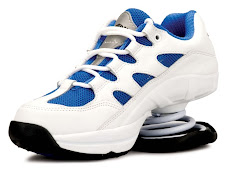 How Are Feet Affected?
How Are Feet Affected?
The foot has dozens of bones, joints, muscles, nerves, blood vessels, tendons and layers of fascia (connective tissue). When the body tissues are sufficiently stressed, they become swollen and/or inflamed. Chronic inflammation may create scar tissue and changes to bony structures. The "it is" behind the words such as "Achilles tendonitis" means "inflammation of the Achilles tendon".
The bones of the foot form arches that are supported by ligaments and muscles. These arches contribute to the strength, stability, mobility, and resilience of the foot. During standing, walking, running or jumping, the arches serve as shock absorbers, spreading energy before it is transferred higher up the leg.
If the arches are lost (for example through conditions of flat foot, overpronation, or simple overuse), the shock-absorbing quality of the arches disappears. This affects the feet, knees, hips and spine. Losing the arch in your feet also changes the position of the knee and hip, which makes them more vulnerable to injury from working on your feet.
Besides the stress of prolonged standing and walking on the foot, the architecture of the foot can also increase the symptoms from pre-existing conditions:
- Plantar fasciitis refers to the inflammation of the fascia under the heel. Flat or tilted feet (from heel pronation) and bony spurs in the base of the ankle may make the condition worse.
- Achilles tendonitis results from overstretching of the Achilles tendon.
- Bunions at the side of the big toe may arise because of heel pronation and may be aggravated by narrow shoe boxes (the area in front of the shoe) and prolonged standing/walking.
- Corns on top of the toes may be aggravated by scraping against the inside of your shoe.
What Are Possible Health Symptoms From Working On Your Feet?
The most common symptom from working on your feet, and usually the first to occur, is discomfort and fatigue in the legs.
The closer the body part is to the ground, the more likely it will be affected by prolonged standing (i.e. the feet are most often affected, followed by the shins and calves, followed by the knees, thighs, hips and low back). However, symptoms from working on your feet may reach to the top of your body. In some studies neck symptoms have been related to prolonged standing work!
Beyond simple fatigue and discomfort, more serious health effects can result from working on your feet. In lab experiments people could not distinguish fatigue in their legs from whole-body fatigue. Therefore, that whole-body fatigue feeling could be related to working on your feet.
Some of these are:
- Low Back Pain (Drewczynski, Hansen, et al., Redfern & Chaffin)
- Painful feet and other foot problems (Drewczynski, Hansen, et al., Redfern & Chaffin)
- Plantar Fasciitis and Heel Spurs (Cailliet)
- Orthopedic changes in the feet (e.g. flat feet) (Redfern & Chaffin)
- Restricted blood flow (from standing only) (Hansen, et al.)
- Swelling in the feet and legs (Drewczynski, Hansen, et al.)
- Varicose veins (Drewczynski)
- Increased chance of arthritis in the knees and hips (Croft, et al.)
Initial symptoms can start within minutes into a standing task. Health effects have been shown to accumulate within days (no studies have assessed longer time periods).
Click Here to read the full article
 Question: Which food boosts your bones?
Question: Which food boosts your bones?



